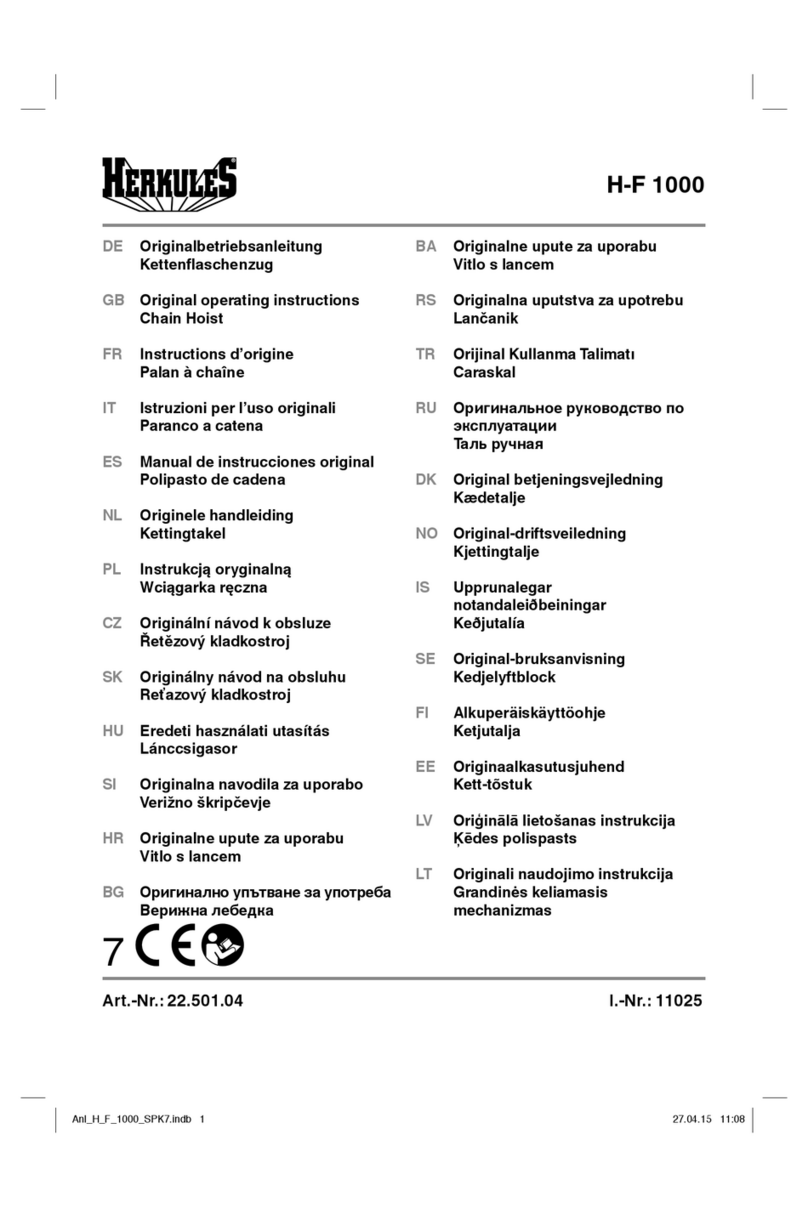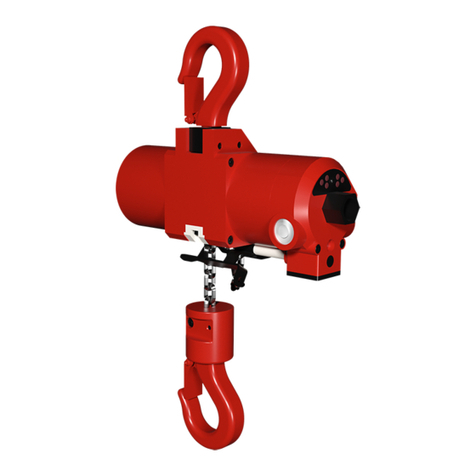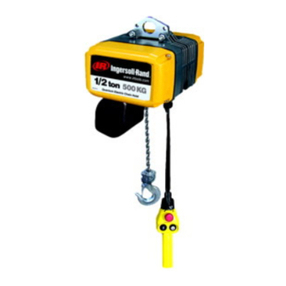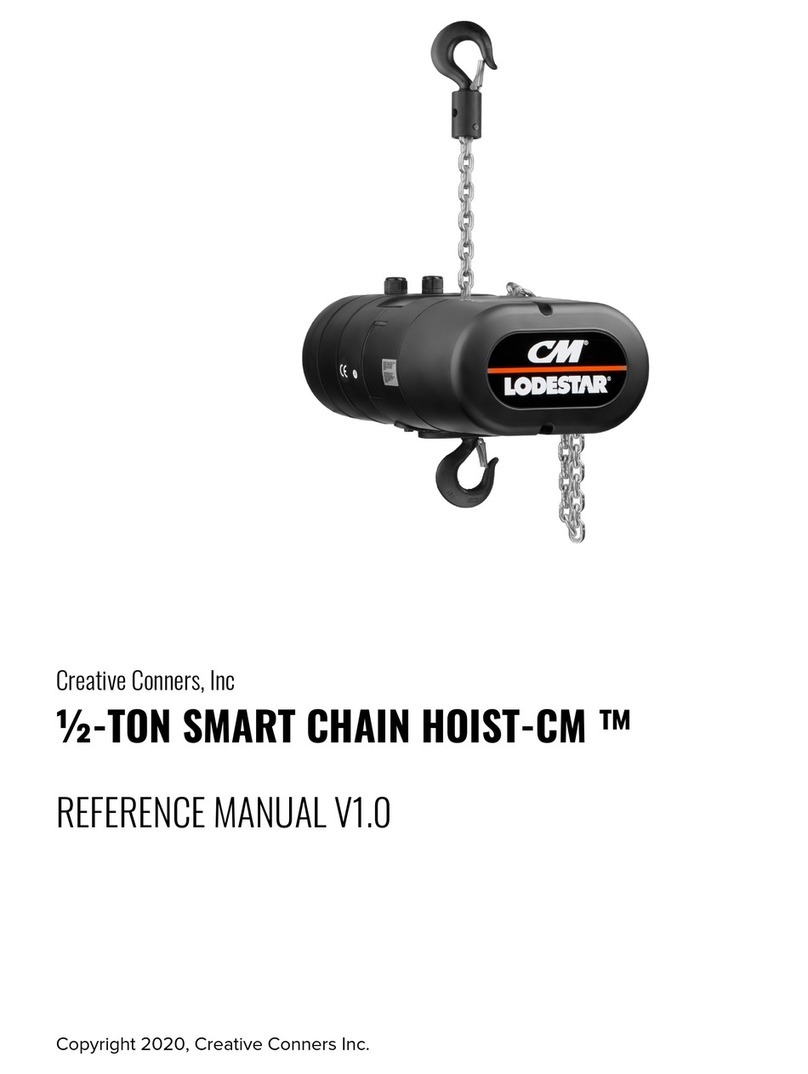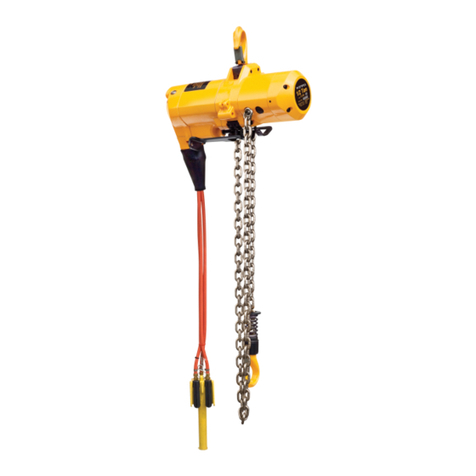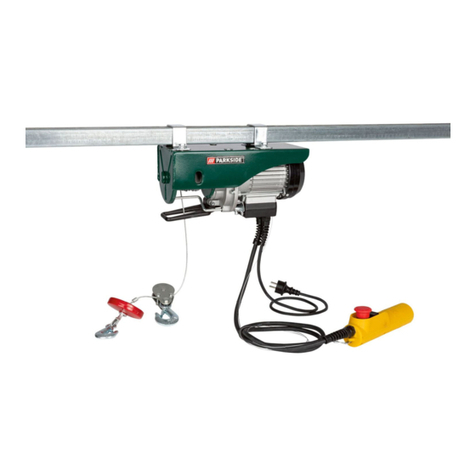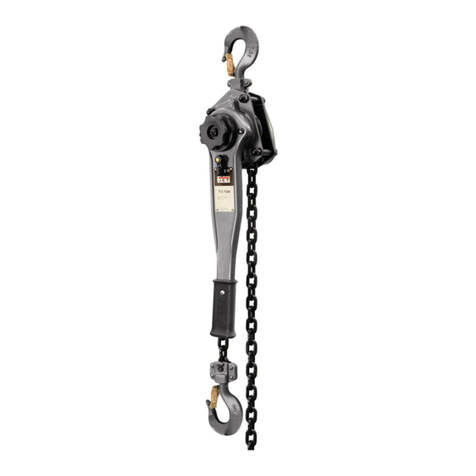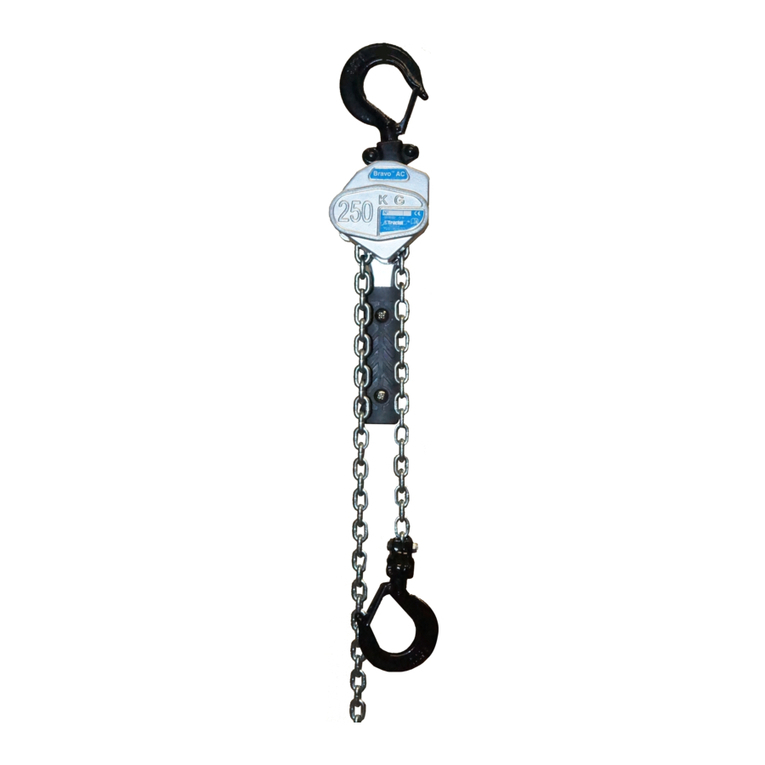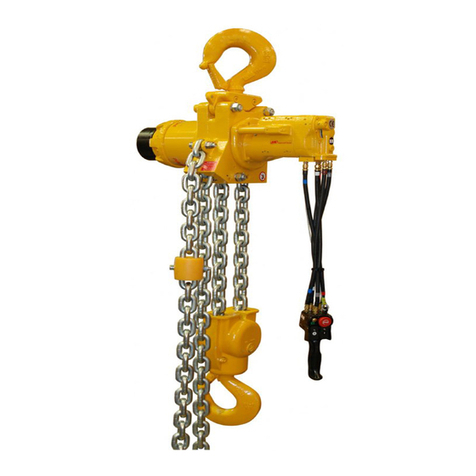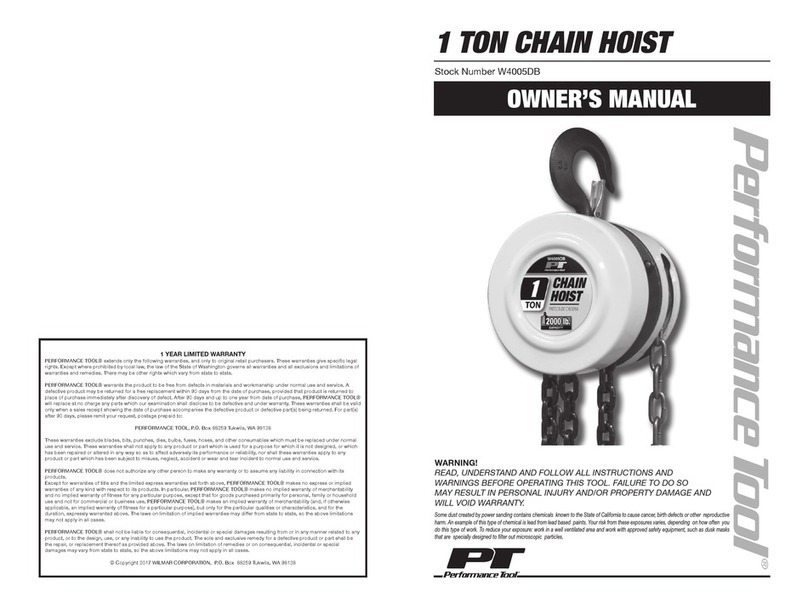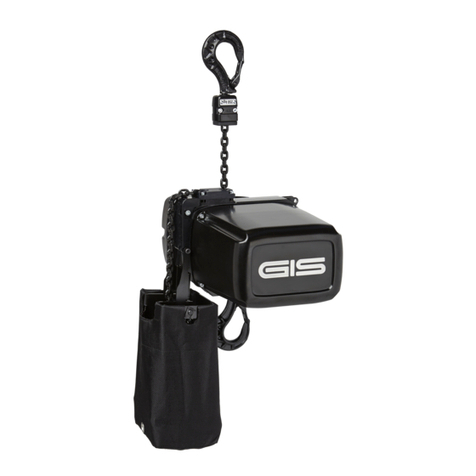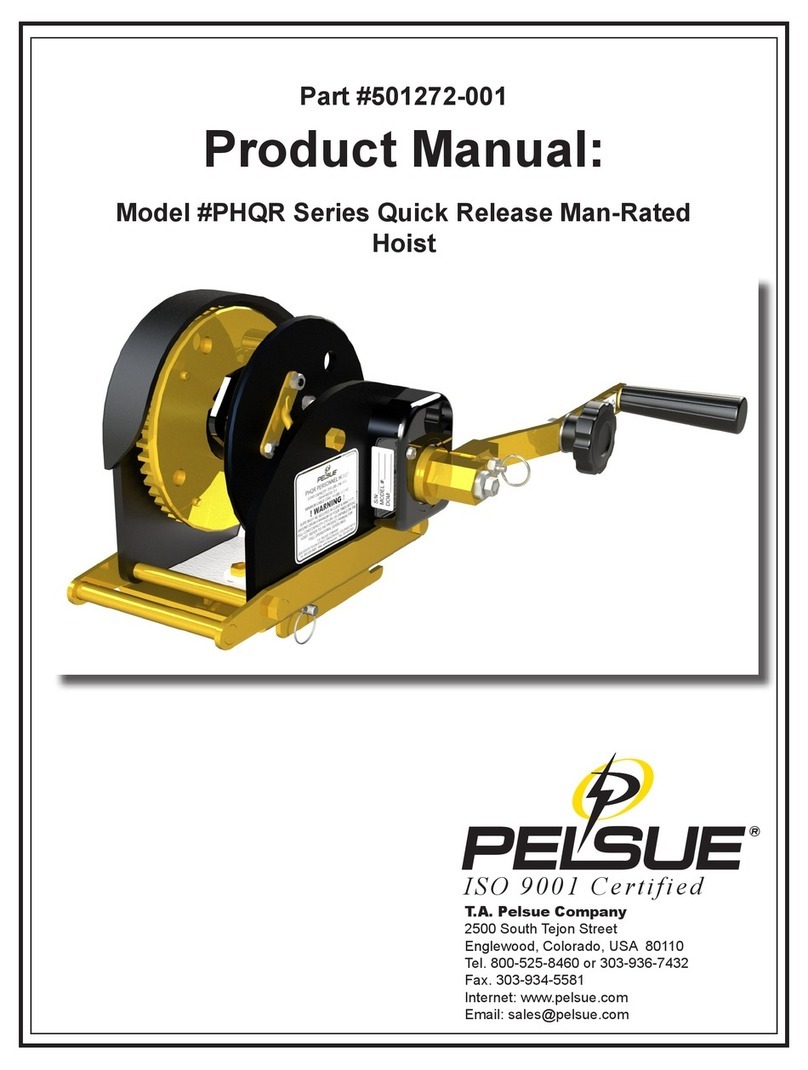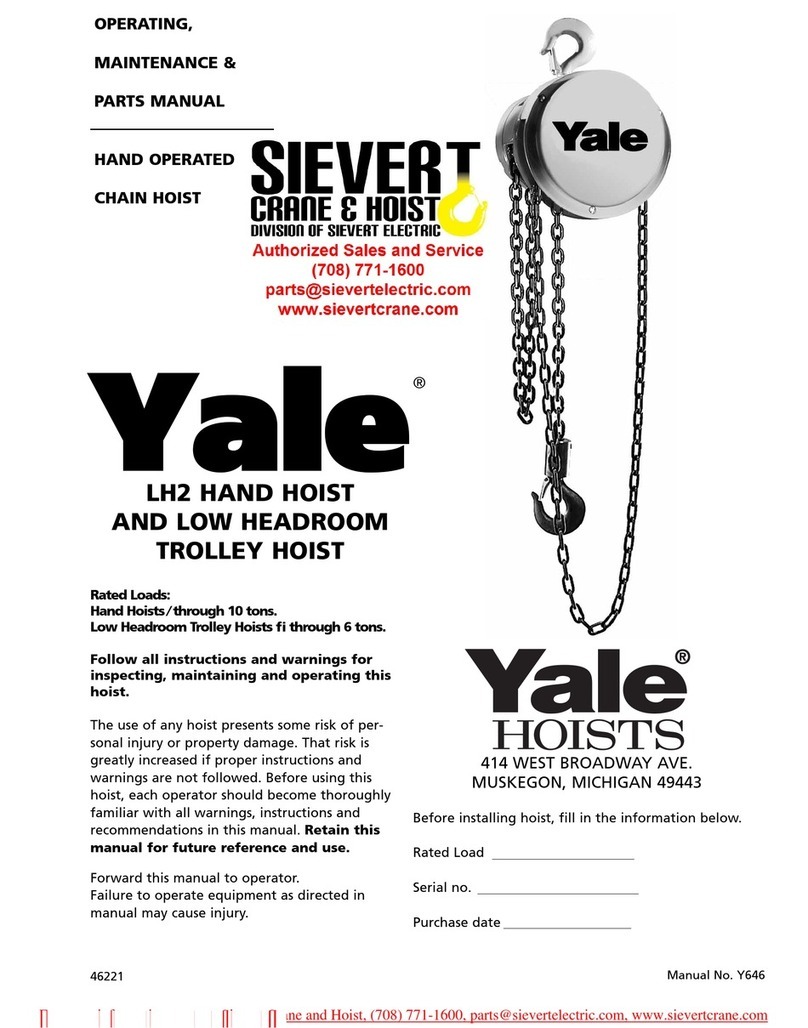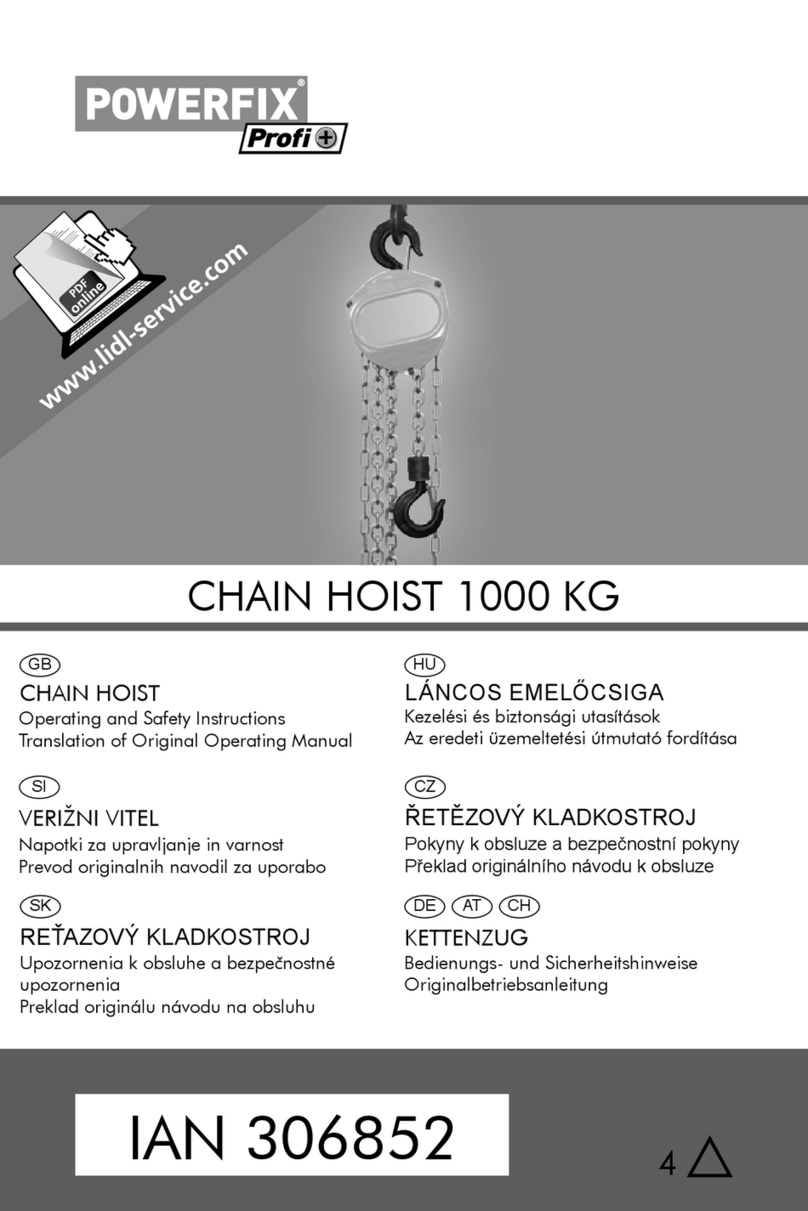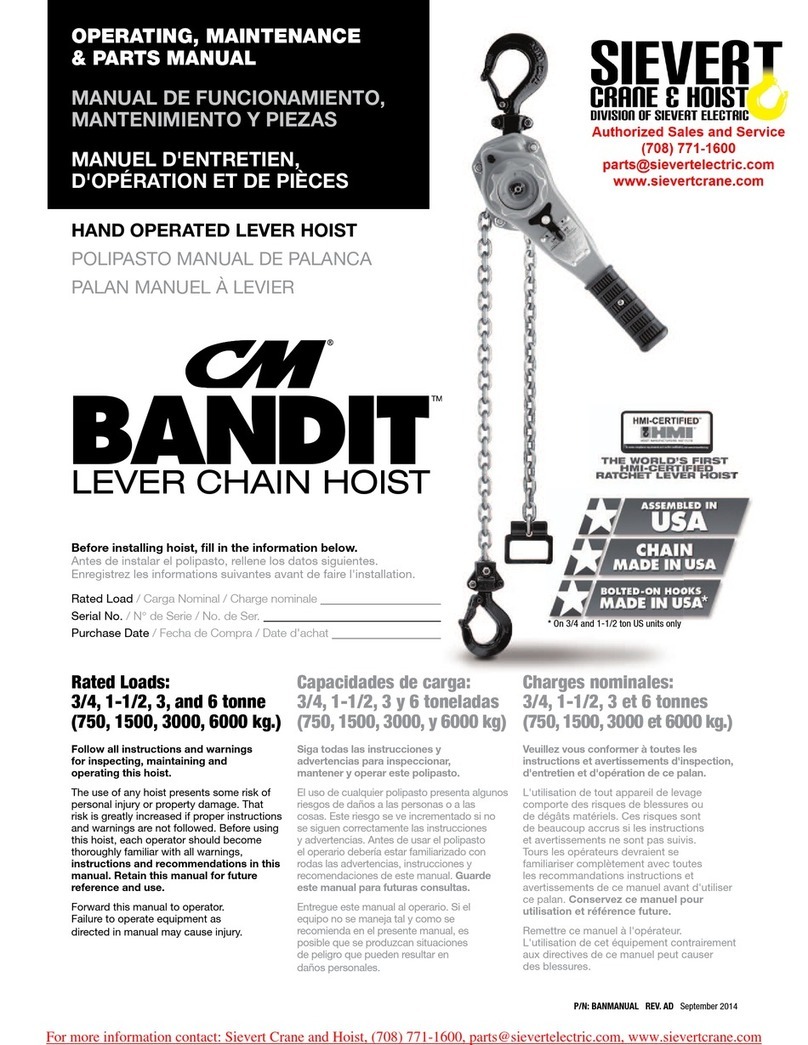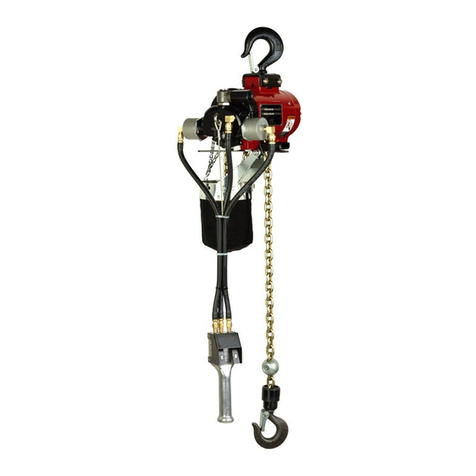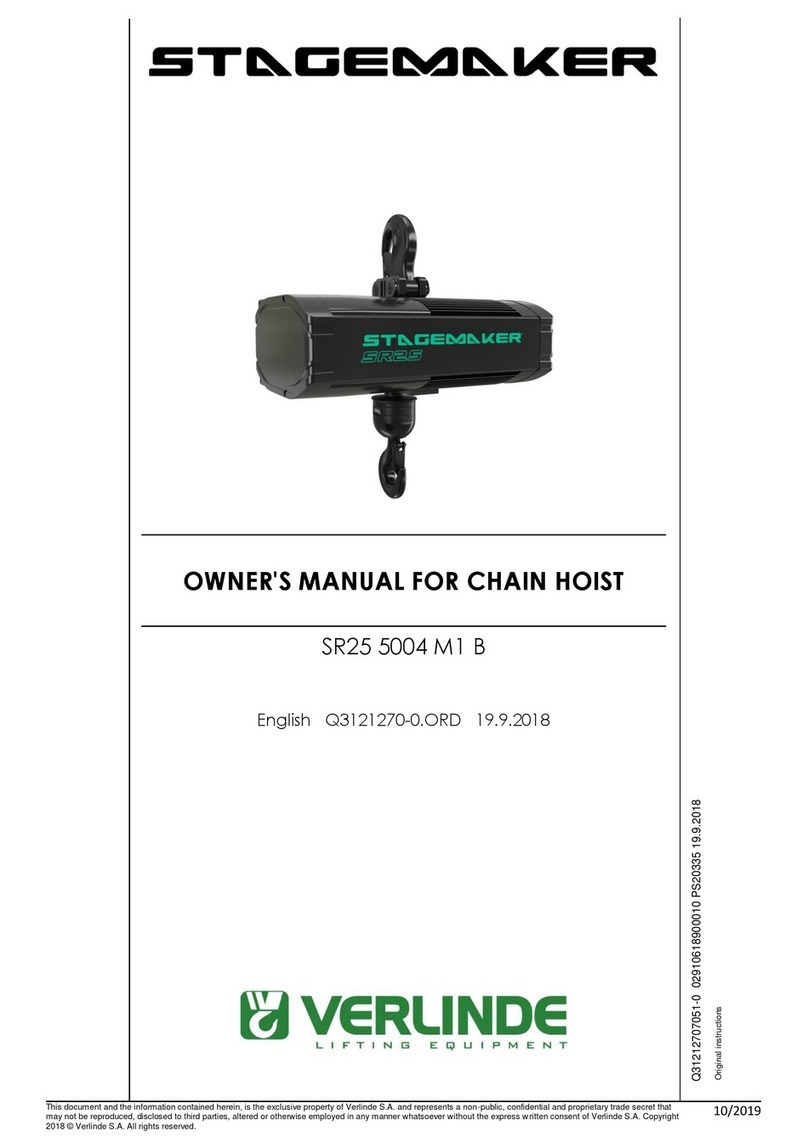
6.5 Load handling.......................................................................................................... 59
6.5.1 Load handling methods................................................................................ 59
6.5.2 Slipping clutch operation.............................................................................. 70
6.5.3 Hoisting limit switch operation...................................................................... 70
6.6 Shutting down the equipment................................................................................. 70
7 MAINTENANCE........................................................................................................ 71
7.1 Safety during maintenance..................................................................................... 71
7.2 Maintenance preparations....................................................................................... 71
7.2.1 Service personnel........................................................................................ 72
7.2.2 Preservation of protection class................................................................... 72
7.3 Maintenance schedule............................................................................................. 72
7.3.1 Design working period (DWP)...................................................................... 72
7.3.2 General overhaul......................................................................................... 77
7.3.3 Daily inspections.......................................................................................... 78
7.3.4 Monthly inspections...................................................................................... 78
7.3.5 Quarterly inspections................................................................................... 79
7.3.6 Annual inspections....................................................................................... 79
7.3.7 Log book...................................................................................................... 80
7.4 Maintaining the hoist............................................................................................... 81
7.4.1 Checking the suspension............................................................................. 81
7.4.2 Checking the brake lining............................................................................. 82
7.4.3 Replacing the single brake........................................................................... 83
7.4.4 Replacing the single brake........................................................................... 86
7.4.5 Replacing the double brake.......................................................................... 89
7.4.6 Replacing the double brake.......................................................................... 92
7.4.7 Adjusting the slipping clutch......................................................................... 96
7.4.8 Replacing the control voltage fuse............................................................... 98
7.5 Maintaining the chain drive..................................................................................... 98
7.5.1 Removing the chain bucket.......................................................................... 98
7.5.2 Inspecting the chain wear............................................................................. 99
7.5.3 Lubrication instructions for the chain............................................................ 102
7.5.4 Replacing the chain...................................................................................... 105
7.5.5 Replacing the chain...................................................................................... 107
7.6 Maintaining the hook............................................................................................... 110
7.6.1 Measuring wear on the hook........................................................................ 110
7.6.2 Checking the limit switch activator................................................................ 111
7.7 Lubrication............................................................................................................... 112
7.7.1 Safety during lubrication............................................................................... 112
7.7.2 General lubrication instructions.................................................................... 112
7.7.3 Lubrication points......................................................................................... 113
7.7.4 Lubricant information.................................................................................... 113
8 TROUBLESHOOTING............................................................................................... 115
8.1 Troubleshooting instructions.................................................................................. 115
9 TRANSPORTATION, STORAGE, AND DISMANTLING............................................ 117
9.1 Transporting the product......................................................................................... 117
9.2 Storing the product.................................................................................................. 117
9.3 Dismantling instructions......................................................................................... 117
9.3.1 Safety during dismantling............................................................................. 117
9.3.2 Dismantling the product............................................................................... 117
OWNER’S MANUAL
This document and the information contained herein, is the exclusive property of Verlinde S.A.S and represents a non-
public, confidential and proprietary trade secret that may not be reproduced, disclosed to third parties, altered or
otherwise employed in any manner whatsoever without the express written consent of Verlinde S.A.S. Copyright 2020
© Verlinde S.A.S. All rights reserved.
4/2020

